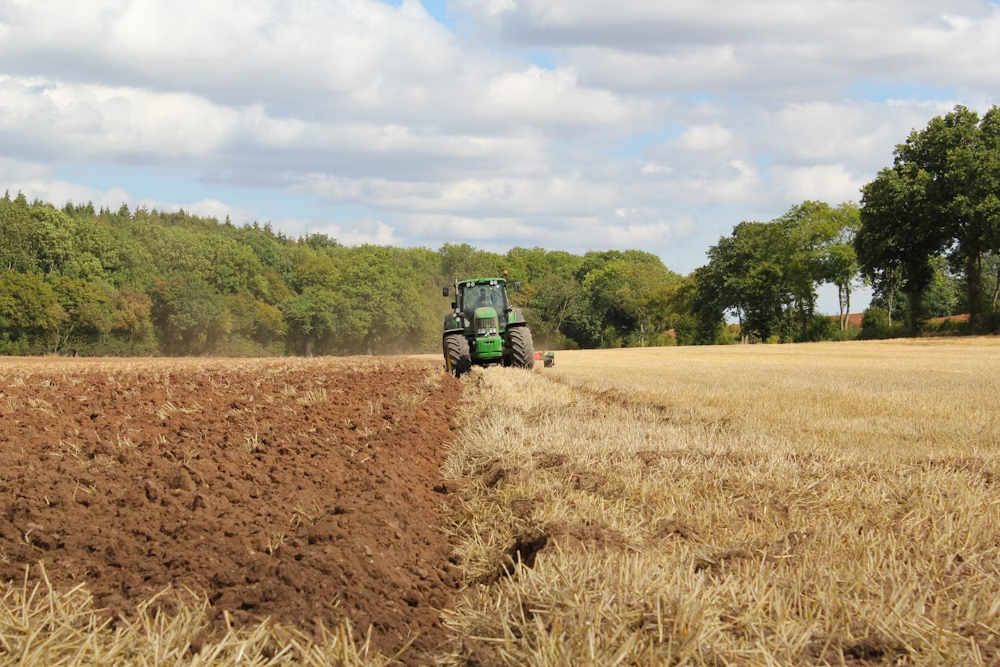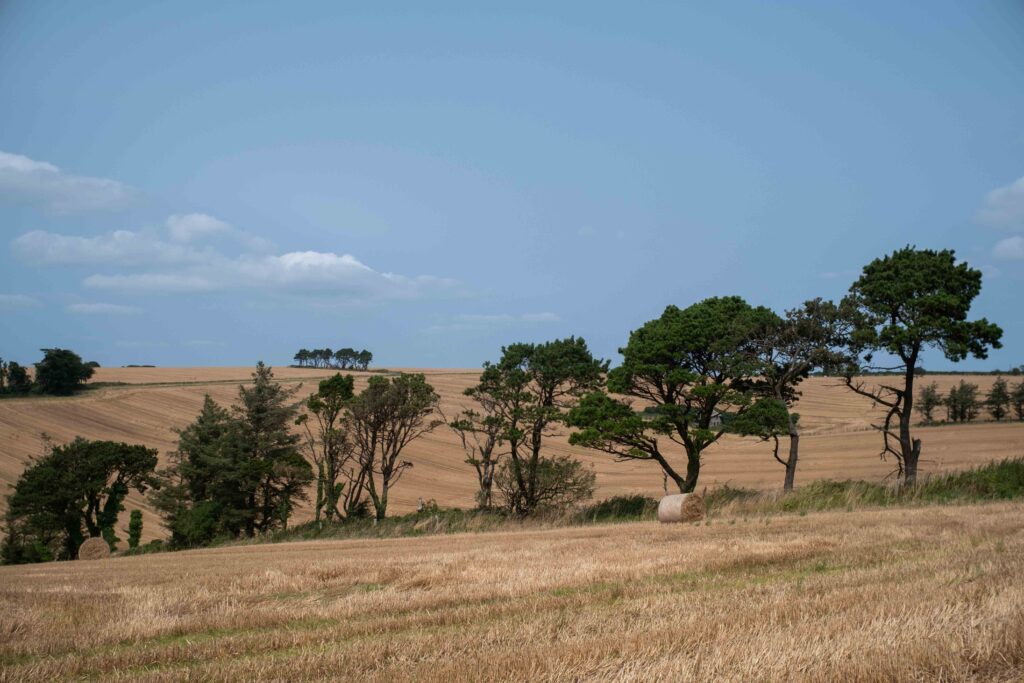Why the LNRS is relevant and how to use it - draft to discuss with farming group (page not yet properly designed), see questions below

Farmers have always played a vital role in managing Devon’s natural environment. Many of the county’s most valued wildlife habitats, such as heathlands, mires, wildlife-rich grasslands and hedgerows, are the result of thousands of years of agricultural activity, particularly livestock grazing.
Today, 74% of Devon’s landscape is farmland (check how this is defined) and much of our wildlife is dependent (directly and indirectly) on how this farmland is managed.
In turn, profitable farming depends on a healthy natural environment. Agriculture needs wildlife (for pollination, pest control and decomposition) healthy soils, a supply of clean water and a stable climate.
However, since the 1940s there have been drastic losses in the abundance and diversity of wildlife across Devon. Farmers are now at the forefront of reversing these declines.
The LNRS sets out the Priorities and Actions for restoring wildlife across Devon. It also sets out where Actions are most needed, which are shown on the LNRS Viewer. The strategy has been developed in collaboration with farmers and aims to help them to:
- Make their farms and rural businesses more profitable.
- Grow healthy crops and livestock.
- Protect soils, water, pollinators and natural pest controllers.
- Contribute to net zero carbon targets
- Access grants and funding such as ELM and Biodiversity Net Gain.
- Better understand how to contribute to Devon wildlife priorities.
- Understand wildlife priorities across landscapes, helping farmers to work together.
- Diversify, such as through green tourism or wildflower seed sales.
- Better understand and enjoy nature.
Please use this strategy to find out more about how to restore Devon’s wildlife where you live and work.
The LNRS is:
- About opportunities for nature, guiding actions and funding.
- Totally voluntary.
- For everyone across Devon.
- Helping to inform land use planning.
- Informing where best to carry out Biodiversity Net Gain using developer funding.
The LNRS is not:
- Imposing new legal designations or protections.
- Restricting land use.
- Dictating how land should be used.
- A delivery plan. It sets out what we need to do, not how to achieve it. A delivery plan is the next step. However Pressures and Opportunities around delivery are included in the Strategy. If any actions are completely unachievable they have not been included in the Strategy.

How to use the LNRS
1. Use the Viewer to see where action is most needed. The 'near me' function opens up all High Opportunity Areas in your area of interest.
2. Follow links from the Viewer to the habitats and species web pages for more detailed information on Priorities and Actions (or go directly to them using the links in the website navigation bar).
3. Share what you are doing or have done by adding it to the LNRS delivery map on the Viewer (not yet done).
Overview of Priorities and Actions
A Devon farmer, reflecting on the LNRS and the role of nature on their land, shared that adding 'texture' to the farm had the most significant impact. This is a great way to start thinking about how to make space and provide for nature in any farm.
Texture describes the importance of diversity in the structure of habitats across a farm. The more we can provide a mix of habitats, including pasture, arable with tussocky margins, rough grass, ponds, scrub and trees both within and outside of woodland, the better.
It’s useful to think about how you can provide the “big 3” when looking at the habitats on your farm:
1. Safe, sheltered places. Where wildlife can breed and rest.
2. Summer food and water. Insect and nectar-rich habitats and ponds, ditches, streams.
3. Winter food and water. Cover crops, weedy stubbles, margins, hedgerows and fruit trees.
Creating patchworks and mosaics of different habitats across your farm is also of great benefit for wildlife.
Questions for the Farming St Group to make the LNRS as user friendly as possible:
- Should we include a summary of all relevant LNRS Priorities and Actions (with hyperlinks)? If yes then should they be listed (a) below or (b) on a separate summary Farming page?
- If no then do we include one summary list of actions as previously drafted and set out at the bottom of this page.
- If (a) then should this just be a list of relevant pages, or (b) include headline details of actions (as in the drop downs below) or (c) a link to a table summarising all priorities and actions for all sectors (d) other option?
Summary of Priorities and Actions
Priority: Nature-friendly and productive arable and agricultural grasslands across Devon, particularly providing habitat for seed-rich plants, insects, ground nesting birds and Focus Species.
Actions include: a) Increase seeds through weedy winter stubbles, leaving improved grasslands to set seed and/or planting winter bird food seed mixes; b) create bare areas in crops for ground nesting birds; c) create vegetated flower-rich and tussocky buffer strips, corners and field margins; d) create low-input cultivated field margins for arable plants; e) plant pollen mixes and herbal leys for insects; f) reduce pesticide use by adopting integrated pest management approaches; g) increase trees through agroforestry.
Focus Species: Arable plants, farmland birds.
Priority: Create bigger, better (abundant in nature) and more wildlife-rich grasslands that are connected to a network of habitats across Devon.
Actions include: a) Manage wildlife-rich grasslands (including tussocky grasslands) through light grazing or cutting regimes allowing plants to set seed and ground nesting birds to fledge; b) expand existing wildlife-rich grasslands where possible and create new ones using locally sourced seed on fields with low phosphate levels.
Priority: Increase the diversity and quantity of freshwater life in our watercourse corridors, better connect them to their surrounding habitats and make them resilient to flood and drought.
Actions include: a) Improve water quality through following best practice when managing nutrients, slurry and manure; b) avoid planting crops on soils vulnerable to erosion; c) reduce soil compaction; d) create a mosaic of habitats along the watercourse (riparian corridor).
Priority: Better (healthy and wildlife-rich) and more trees outside woodlands, and ancient and veteran trees across Devon in rural and urban areas. Existing veteran trees form the core of a future veteran tree network that is growing across Devon.
Actions include: a) Leave standing and fallen deadwood; b) protect the root zone through sensitive agricultural management; c) time works to avoid impacts on wildlife, particularly during breeding and hibernation seasons; d) increase tree cover through agroforestry; e) work with neighbouring landowners to control deer and squirrels.
- Hedgerow corridors
- Traditional orchards
- Wood pasture and parkland
- Heath, mire and rush pasture mosaics
- Lake and ponds
- Invasives and disease
- Data
- Funding and advice (will include actions relating to the need for a coordinated Devon farm advice service (based on the Review of Devon Farm Advice, 2022) and actions relating to ensuring that ELM funding helps to deliver nature recovery in Devon in line with the LNRS....
Or - Do we just use the list below to give a simple overview (as per draft previously discussed with the farming group) but align the wording with the LNRS actions?
Headline actions for nature-friendly farming
- Maintain rough vegetation with mosaics of open and scrubby habitats where suitable, for example by low-intensity grazing with suitable breeds.
- Maintain traditional hay meadows, cutting or grazing late in the season to allow seeds to set and nesting birds to fledge their young.
- Encourage tussocky grass to develop by taking grassland field corners or blocks out of management.
- Provide winter bird food on improved grassland by allowing it to set seed.
- Provide areas on arable fields that produce a supply of small seeds for smaller farmland birds from late autumn until late winter.
- Provide sources of pollen and nectar for invertebrates in spring and summer by establishing and maintaining blocks or strips of flowers, and/or wide tussocky margins.
- Avoid soil erosion from bare ground on arable fields that's left through the winter by planting herbal leys or winter cover crops.
- Generate a diversity of structures in hedges and leave a food store for the winter months by managing hedges to become taller and thicker.
- Support wetland species by creating and maintaining wetland habitats including ponds, rivers, streams and marshland.
- Reduce the use of fertilisers and pesticides by adopting an Integrated Farm Management (IFM) approach. IFM aims to increase crop and livestock health through healthy soils, improved animal husbandry and farm planning: Integrated Farm Management | LEAF (Linking Environment and Farming).
- Reduce the impact of deer on trees by collaborating with neighbouring landowners to produce and implement a Deer Management Strategy (see Trees and Woodlands pages for action on this).
Find out more
There are useful links to guidance and funding for farmers in the habitat and species sections.
